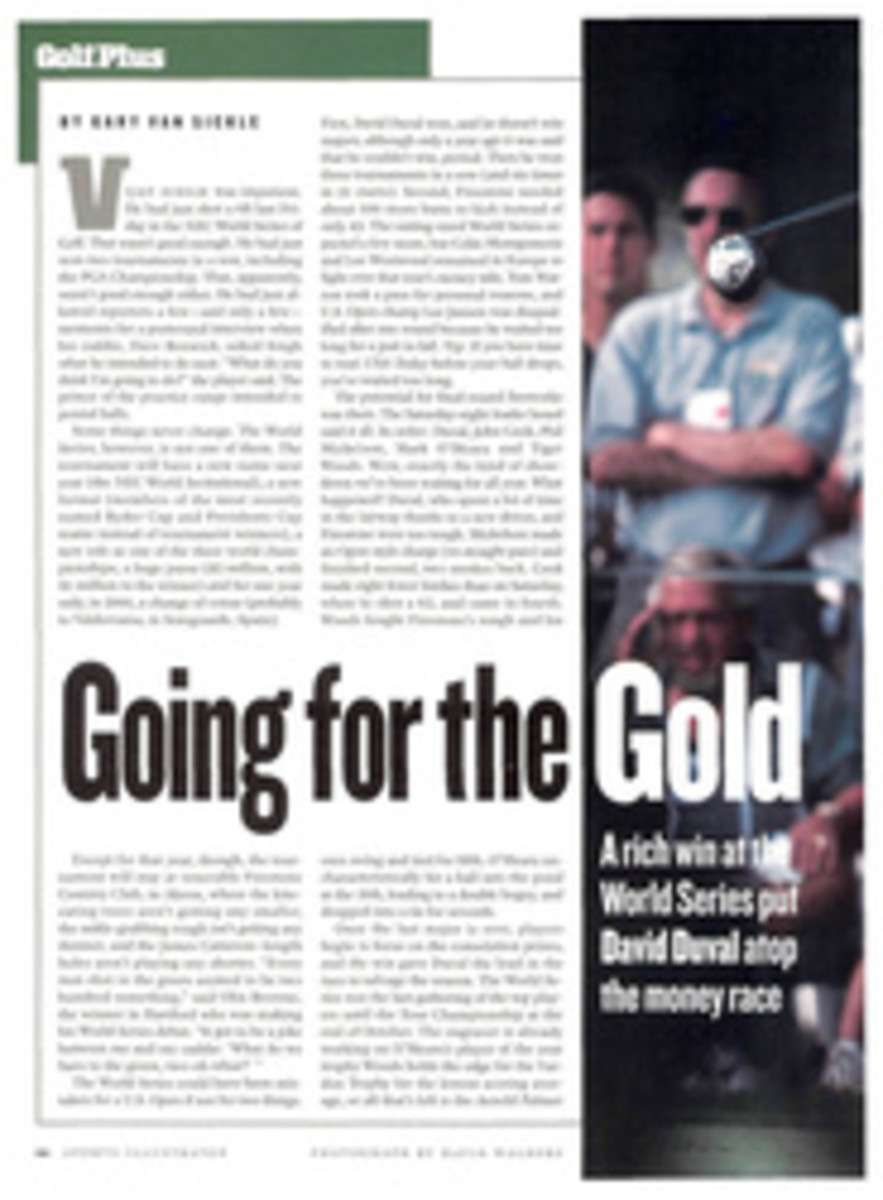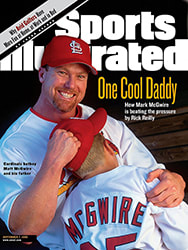
A Great Ugly Cloud Athletes must take control of their sport to save it
I don't remember when I first heard about steroids. Probably it
was around 1972, when they were first banned by the
International Olympic Committee and I was on the track team in
high school. If there was a debate about steroids in the papers,
I didn't pay much attention to it, mostly, I suspect, because I
didn't think they bore relevance to my life as an athlete. I
considered them the province of weightlifters, shot-putters,
football players and other "big" athletes--not skinny distance
runners like me.
This I do remember: I passed the summer of 1981 in a state of
giddy transport, and from that I conclude that I cannot have
known much about steroids yet. That was the summer Steve Ovett
and Seb Coe snatched the world mile record back and forth like a
couple of kids fighting over candy. By then I was teaching
junior high English at Princeton Day School, and most mornings
that summer my fellow teacher and running partner Eamon Downey
and I would drive to a nearby deli for coffee and The New York
Times. Every day, it seemed--though, of course, this was not
literally true--one of the two Brits, each so charismatic in his
own way, had run some stunning time: if not a world record, then
something very close to it. For runners like Eamon and me, it
was the equivalent of reading that men had walked on the moon.
Anything seemed possible.
I've lost the capacity for that sort of exhilaration. This
summer's unsurprising revelations of drug use among riders in
the Tour de France and alleged drug-sample tampering by Irish
swimmer Michelle Smith, and the bans of two U.S. track and field
stars, sprinter Dennis Mitchell and shot-putter Randy Barnes,
felt more like deja vu than shock. My capacity for wonder has
slipped away gradually over the years, starting in 1983, when I
learned that steroids would also help skinny distance runners
like me. If our bodies could tolerate two hard track sessions a
week without steroids, we would probably be able to handle three
or four with them. Sure enough, at the 1984 Olympics, one of
those skinny distance runners, Martti Vainio of Finland, tested
positive for steroids after finishing second in the 10,000 meters.
The use of steroids and other performance-enhancing drugs has
covered the sport with a great ugly cloud. At the 1992 U.S.
Olympic Trials in New Orleans, when the Supreme Court granted
Butch Reynolds a temporary restraining order allowing him to
compete despite an earlier positive drug test, for which he had
been banned for two years, I asked a respected track and field
journalist, a former athlete, if he thought Reynolds was guilty.
"I have no idea, but I suspect so," he said. "Why? Forty-three
twenty-nine." He was referring to Reynolds's world record of
43.29 seconds in the 400 meters, a time .57 of a second faster
than anyone else had ever run.
And there, in a nutshell, is the awful bind that track fans find
themselves in: Any dazzling world record instantly raises the
specter of cheating. Whatever miraculous feats I may witness in
the future--a man long-jumping 30 feet, a woman running a
four-minute mile--I doubt I'll shake off the conviction that those
marks have not been achieved naturally.
This sorry state is not the fault solely of athletes, most of
whom, I think, would love to see a return to the level playing
field of the presteroid era. But where's the incentive? Meet
promoters sell tickets based on the promise of records; agents
make more money as their athletes run faster or jump higher;
federation officials obtain sponsorship based on how hot their
sport is. The last thing these people want is a scandal. That's
why Olympic officials trumpeted the fact that of the 1,800 drug
tests conducted at the Atlanta Games, only two were positive.
It's great p.r.; it's what we all want to hear.
A 70-foot-plus shot-putter once told me that he believed no one
had ever thrown 70 feet without an artificial boost; the human
body just isn't built to do that any more than it's built to
race over the Alps day after day on a bicycle. So imagine
yourself a young shot-putter, in love with your event. Do you
stay clean and top out at, say, 66 feet, never having reached
the glorious European circuit, beaten meet after meet by guys
you're sure are juiced? Virtue may be its own reward, but if
you're willing to be honest, I think you'll agree that's not an
easy decision.
Unfortunately, several decades of, first, no testing and then
virtually meaningless testing opened a Pandora's box of
artificially boosted performances that raised fans'
expectations. A few years ago I stood in Stanford Stadium with
discus thrower John Powell. He pointed to the huge, empty stands
surrounding us and reminded me that he had seen them full for
one of the U.S.-U.S.S.R. dual meets in the early 1960s. "Would
all those people come out again to watch sprinters run 10.2?" he
asked.
How do we fix this mess? Here are two suggestions that might
offer a first step.
First, since human evolution can't keep pace with our hunger for
new records, and neither can advances in training, why not
reemphasize competition over records? Who can actually see the
difference between a 9.84 100 and a 10.04 100? But a close race,
with two or three athletes straining toward the finish, now,
that's exciting. Admittedly, reeducating the public to look at
track and field this way would be hard, especially when
seemingly everyone--TV commentators, meet promoters, this
magazine--regards records as the measure of a great meet.
Second, I'm convinced that the best hope for cleaning this up
lies with the athletes. Drug testing that is planned and
enforced by nonathlete administrators feels imposed, inviting
attempts to circumvent it. Several decades ago Coe and current
USA Track & Field CEO Craig Masback, then an outstanding miler,
pushed for the formation of a track and field athletes' union.
It didn't happen, largely because of the difficulties of uniting
competitors from so many countries and so many events. The time
has come to try again, and meaningful, reliable drug testing
should be the body's first order of business.
Although Ben Johnson's stanozolol-fueled 9.79 in the 100 at the
Seoul Olympics is one of just a handful of world records to have
been thrown out because of a positive drug test, there is no
question that other world marks have been set by athletes using
steroids or other illicit performance enhancers. Haven't those
record setters forced their rivals--and athletes of the future--to
use drugs too? It's that or chase fruitlessly after marks that
won't be broken by clean athletes.
Tom Tellez, Carl Lewis's great coach, told me that he does not
think Lewis could ever have equaled the 9.79 Johnson ran in
Seoul, and the current world record, the 9.84 that Donovan Bailey
ran at the Atlanta Games, is still a long way from Johnson's
discredited mark. Had Johnson not tested positive, how long would
we have had to wait for someone even to approach the 100 record?
If a sprinter ever does run a 9.79, of course, fans will
automatically assume that he has been using performance-enhancing
drugs, whether he has or not. Is that the legacy today's track
and field athletes want to leave behind? Cynicism where there
might be exhilaration?
COLOR ILLUSTRATION: PHILIP BROOKER [Drawing of clock, pill and runner]
Any dazzling world record instantly raises the specter of
cheating.

